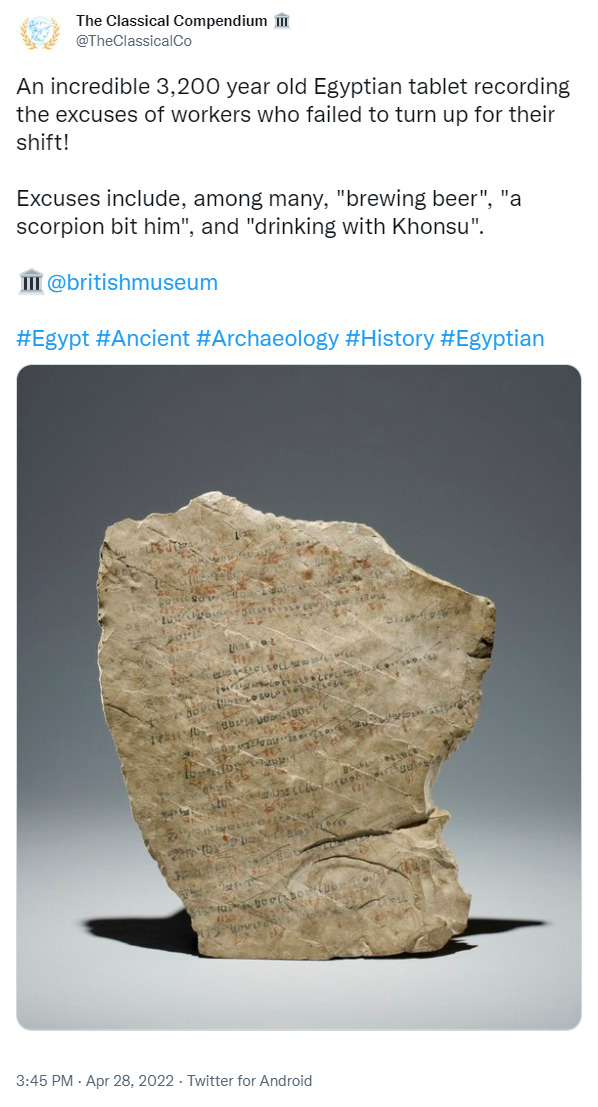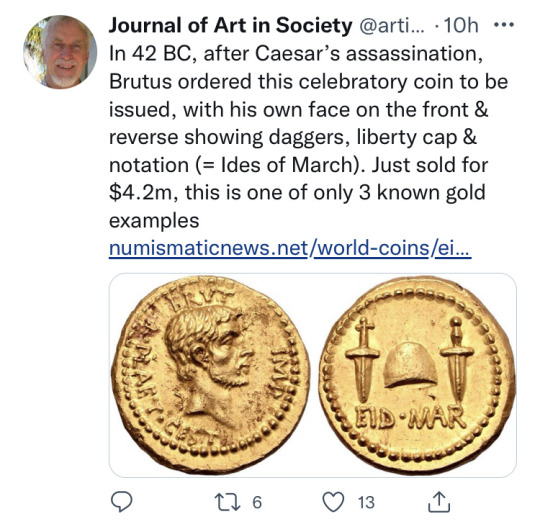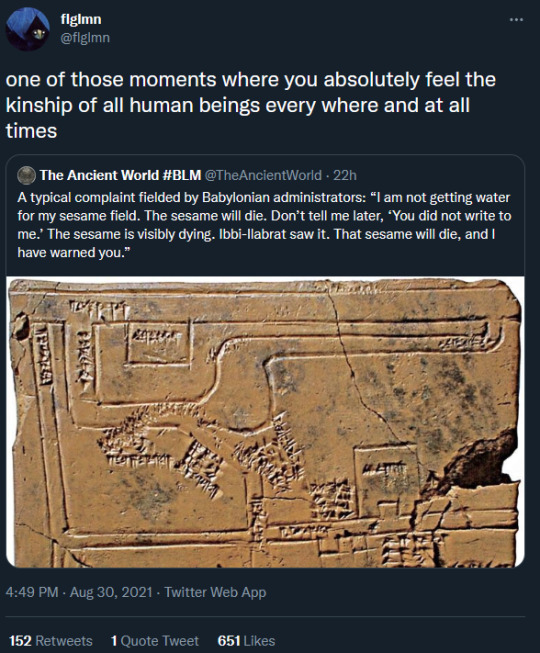Text
i am not an artist or a set designer, but i've seen light shows - we don't want to paint on ancient statues, for obvious reasons, but what if we projected the colors onto the marble to show what they might have looked like?
13K notes
·
View notes
Photo

Second National March on Washington for Lesbian and Gay Rights, Washington, D.C., October 11, 1987
Sections 553 and 554 of Article 27 of the Maryland Code prohibited sodomy (punishable with a sentence of “not less than one year nor more than ten years”), oral sex, and “any other unnatural or perverted sexual practice with any other person.”
96K notes
·
View notes
Text
Shout-out to the Parthian diplomats who conspired to keep Rome and China ignorant of each other and thus preserve Persia's monopoly as the "end" of the silk road by just making up more and more outlandish lies. That shit was great.
13K notes
·
View notes
Text
Should make a Controversial Truths about ancient Egypt version that’s specifically about the medical papyri, with thrilling entries such as:
There is no evidence the ancient Egyptians used tampons to collect menstrual blood; this idea probably comes from misinterpreting the various recipes for vaginal suppositories in the medical papyri
The sometimes-cited “abortion” recipe from the Ebers papyrus is not an abortion recipe but rather a contraceptive treatment. The medical papyri do sometimes use ambiguous language in similar treatments, which have been cited by non-Egyptologists as referring to abortions, but these cases deal with contraceptive measures or stillbirths/miscarriages
Egyptian medicine didn’t “resort to magic only when purely rational treatments didn’t work”. While we do see an increase in treatments that invoke heka to effectuate a cure for ailments that may have been beyond the skillset of the Egyptian physician, heka does crop up in a lot of perfectly manageable situations such as treating a stuffy nose or untying a bandage. Heka was an integral part of medicine, not something that was “a last resort”
Egyptians didn’t have a form of proto-electroshock therapy for migraines/gout/other types of chronic pain; this idea comes from a paper that features a mistranslation of a recipe against migraines/headaches in the Ebers papyrus, which left out half of the remedy, imposed modern English idioms upon the original Egyptian, and ignored basically everything we know about Egyptian medical practices in order to make the electrotherapy claim hold weight
Yes, the Egyptians did have a pregnancy test that also doubled as a gender prediction test. A study from the 1960s found it fairly accurate when it came to predicting pregnancy, but it did not have a good track record for gender prediction. However, it is also true that we’re not altogether sure which grains respectively should be used for the gender prediction part of the test, so we can’t make any definitive claims
The Edwin Smith Papyrus makes mention of using the pulse as a measure of overall health, citing “if it (the heart) is weary to speak” as part of the diagnostic process. While there is some discussion on what the phrase used means exactly, it’s likely that the Egyptians knew of the connection between a strong pulse and good health roughly a millennium before the advent of Hippocratic medicine
Contrary to popular belief, the Egyptians didn’t think the brain was completely useless: they actually knew it was vital in life and that damaging it could lead to injury and even death, they just didn’t know exactly what it does. This knowledge becomes clear in the Edwin Smith Papyrus; this textcontains the earliest known mention of a contrecoup injury and accurately ties the effects elsewhere in the body (a partially paralysed leg) to head trauma sustained after a fall
3K notes
·
View notes
Text
did you know that in 1953 eisenhower issued an executive order which banned gay people from being employed in government and it was specifically to root out lesbians who enjoyed the job security of government work
277K notes
·
View notes
Photo

Map Depicting Tile Designs From Every Country
While some cultures have a world-famous tiling tradition from which to draw inspiration, others are less well known.
That’s why QS Supplies created a mapped guide to the most desirable tile designs from every country on Earth.
1K notes
·
View notes
Text
“The Luddite opposition to machines was, it must be said, not a simple technophobia. As Sale notes, many of the Luddites were weavers or other skilled textile workers who operated their own complicated tools. Their revolt was not against machines in themselves, but against the industrial society that threatened their established ways of life, and of which machines were the chief weapon. To say they fought machines makes about as much sense as saying a boxer fights against fists. As Sale describes it, the Luddite rebellions were never simply against technology, but “what that machinery stood for: the palpable, daily evidence of their having to succumb to forces beyond their control.””
— Gavin Mueller, Breaking Things at Work
711 notes
·
View notes
Text
FOR THOSE OF Y’ALL INTERESTED IN READING ACCOUNTS OF VLAD DRACULA WRITTEN A FEW DECADES AFTER HIS DEATH…
READ A MANUSCRIPT WRITTEN BY THE MONK EFROSIN HERE
SOURCES FROM THE GLOBAL MEDIEVAL SOURCEBOOK HERE
35 notes
·
View notes
Text
Medieval Letter Reveals Bawdy Nun Who Faked Her Death to Escape Convent

Medieval nun fakes death to escape convent and enjoy a life of carnal lust. Sounds like the basis for a juicy novel, but this really happened during the 14th century in England.
Archivist and historian Sarah Rees Jones discovered the real-life tale while investigating the Registers of the Archbishops of York, which recorded the business of archbishops from 1304 to 1405, as part of a project to make the contents of the documents accessible online.
In a letter (in the registers) dating to 1318, Archbishop William Melton describes a “scandalous rumor” he heard, detailing the blasphemous behavior of a nun named Joan to the Dean of Beverley, who was responsible for an area of Yorkshire some 40 miles (64 kilometers) east of York, said Rees Jones, a medieval historian at the University of York and principal investigator on the project. Read more.
2K notes
·
View notes
Text
where is that renaissance painting with those two fellers and a giant fucking random skull on the floor that looks like it was accidentally stretched out in photoshop
390K notes
·
View notes
Text
Invention of bread is weird bc it’s like some Neolithic ppl were like “hey you know that tall grass thing that’s sorta edible but not really how about we take it and grind it into a very very fine powder which is extra backbreaking right now bc the wheel won’t be invented for awhile and then we mix it with water and heat it up and you know what let’s also toss some mold in there just to see what happens”
40K notes
·
View notes
Text
Ea-Naṣir Goes Clothes Shopping (UET V 848/BM 131428)

In the interest of helping y’all stalk a guy who’s been dead for three thousand years, I present to you another document excavated from the archives of Ea-Naṣir! This one is a purely practical one: a record of sale for 50 garments to Ea-Naṣir. The guy apparently liked his clothing (or, more likely, bought it to sell as a merchant).
11 garments:
value: 1/3 mina, 2 2/3 shekels of silver
5 garments:
value: 13 shekels of silver
2 garments:
value: 6 ½ shekels of silver
5 garments:
value: 10 2/3 shekels of silver
27 garments:
value: 5/6 mina, 4 ½ shekels, 15 še
______________
50 garments:
value: 1 2/3 mina, 7 1/3 shekels, 15 še:
in the hands of Mr. Ea-Naṣir
(A mina was about 500g; a shekel was 8.3g; a mina was .05g. So the total weight in silver for 50 outfits was about 895g, or two pounds.)
19K notes
·
View notes
Photo
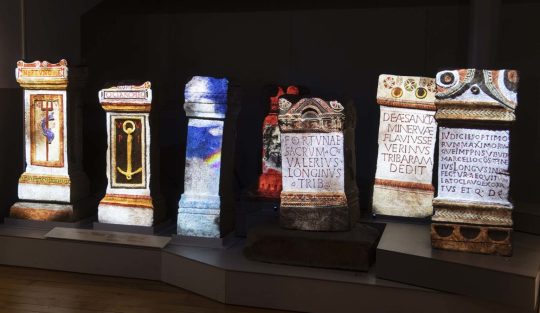
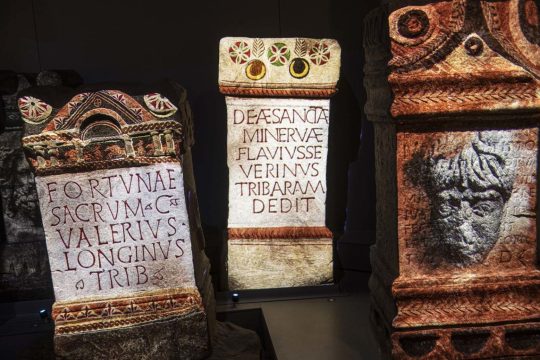
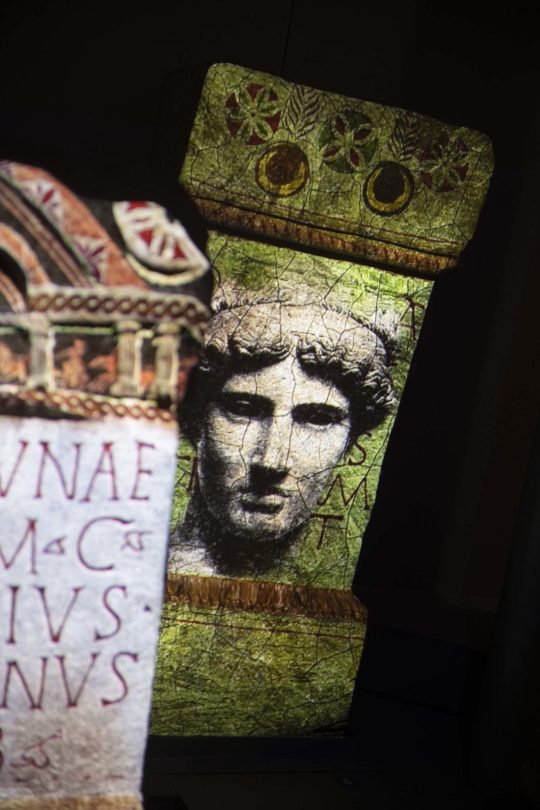
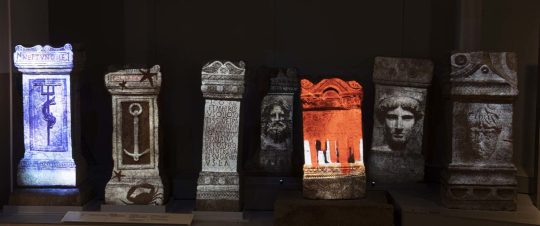

Roman Altars Reveal Their True Colors
Seven Roman altars at the Great North Museum: Hancock now feature animations projected directly onto the stone surface
Historians often tell us to try and visualize the past as a colorful place – whether it be the bright colors of medieval clothing and statuary or the vibrant blues and golds found in the tombs of Antiquity.
Accordingly Roman Britain was also a place of vibrant hues – even at its most northern reaches. Apart from the deep red robes of the Roman legions, Pliny the Elder cited the orange, red and purple worn by priests and priestesses, while common dyes used in the Roman world included madder, kermes, weld, woad, saffron and lichen purple.
But these colors weren’t just confined to robes and other clothing, the statues and buildings also offered a surprising palette – as can be glimpsed in a new project at the Hancock in Newcastle, which is revealing the colors encountered along Rome’s Northern frontier at Hadrian’s Wall.
The Museum has a vast collection of altars recovered from Hadrian’s Wall – many of them with dedications to the deceased and inscriptions to the Roman Gods – and seven of the latter now feature animations projected directly onto the stone surface to offer a sense of how brightly colored the altars appeared 1900 years ago.
The project, called Roman Britain in Color, is a collaboration between the Museum and Hadrian’s Wall Community Archaeology Project (WallCAP), working alongside creative studio NOVAK.
“We’re used to the look of sandstone altars and reliefs in museums but we forget that they were originally painted in bright colors,” says Andrew Parkin, the Museum’s Keeper of Archaeology. “The paint has been lost over the centuries but researchers have found trace amounts of pigment using ultraviolet light and x-rays.
“These new projected animations really make the altars stand out and add greatly to the Hadrian’s Wall gallery in the museum. The team at NOVAK have done a fantastic job in creating the artwork and mapping the projections precisely onto the stones.”
The animations also offer some artistic interpretations of the altars and the gods associated with them. For instance, the altar to Neptune, Roman god of freshwaters and rivers, was found in the River Tyne. It depicts a blue underwater scene filled with fish.
The altar to Oceanus, god of the sea, is animated with seaweed, starfish and a crab, whereas the altar to Fortuna drips with bright crimson, perhaps suggesting a ritual using wine or the blood of a sacrificed animal.
Other altars with new animations are dedicated to Jupiter, supreme deity of the Roman pantheon, Minerva, goddess of wisdom and strategic warfare, and Antenociticus, a native British god only found at Condercum Roman Fort – present-day Benwell in the west end of Newcastle.
“Roman altars are a great source for understanding the culture of the Roman Empire, but they can seem boring and uninteresting for people that do not know how to ‘read’ them,” adds Dr Rob Collins, Senior Lecturer in Archaeology and WallCAP Project Manager at Newcastle University.
“Working with NOVAK and the Great North Museum: Hancock, the altars come alive and invite you to look more closely at the artistry and information that they hold.”
Anyone interested in volunteering for the WallCAP project can register at wallcap.ncl.ac.uk. Volunteers receive regular updates to alert them of forthcoming opportunities and events to investigate and protect the Wall.
By Richard Moss.
2K notes
·
View notes

